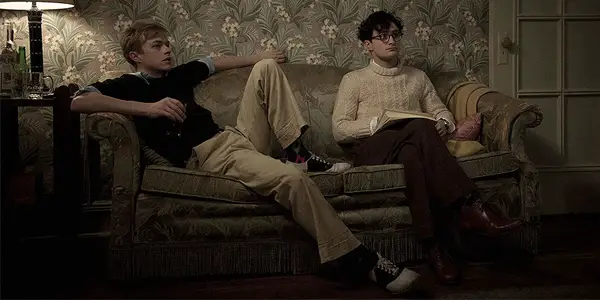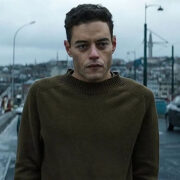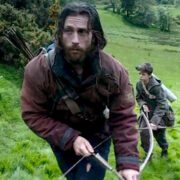Film Inquiry Recommends: Films Shot By A Female Cinematographer

Alex is a 28 year-old West Australian who has a…
Over at our official Facebook page, we are currently posting daily film recommendations, with each week being a different theme. This is a collection of those recommendations! This week’s theme is films shot by a female cinematographer.
Despite the growing number of great female cinematographers in recent years (unfortunately it’s quite hard to find a solid list of films with female cinematographers before the 1990s), there has never been a female cinematographer nominated for the Academy Award for Best Cinematography. It’s the only category in Academy Awards history to have zero women nominated.
Only 4% of the American Society of Cinematography members are women, which currently equates to the total of 12 members, a sadly low figure. Nonetheless, their work is still appreciated, as we highlight some of the great films shot by female cinematographers over the years.
1. Salaam Bombay! (1988, Mira Nair)
Cinematographer: Sandi Sissel

Krishna (Shafiq Syed), in response to his older brother’s constant bullying, sets his brother’s bike on fire. His mother is furious at Krishna for the act, so she drops him off at the local Apollo Circus and tells him that he can only return home once he’s earned the 500 rupees required to fix the bike. Quickly fleeing the circus, he gets a job delivering and selling tea for Chacha (Irshad Hashmi), who owns a small street bar.
Krishna becomes friends with the heroin addicted Chillum (Raghuvir Yadav), a seller for the drug dealer and caftan Baba Golub (Nana Patekar). He also befriends Manju Golub (Hansa Vithal), who is the daughter of Baba, his mother being the prostitute Rekha (Anita Kanwar). Krishna dreams of saving 500 rupees to return home, but life on the streets of Bombay does not make it easy for the young child.
Upon release, Salaam Bombay! was an international hit, with a string of wins and nominations that included a nomination for Best Foreign Film at the 1989 Oscar ceremony (being only the second Indian film to do so). Much like Slumdog Millionaire, the film used actual street children for its primary young cast, giving the film an authentic feeling and really capturing the desolate conditions that these children suffer under just to try and get by. This was the debut feature for director Mira Nair, who has continued to have a successful career in Hollywood, directing such hits as Monsoon Wedding, Hysterical Blindness and The Namesake, which has established her as a force to be reckoned with.
Salaam Bombay! deals with a myriad of social issues in a very confronting and unrelenting fashion. It focuses with matters concerning drug dealing, poverty, prostitution and more, presented in a way which is much more genuine than most Hollywood productions, which usually feel that they have to ease the audience out of confrontational elements by using mainstream actors, contrived scriptwriting, or comedic relief. Nair avoids this and presents these issues without any bias, showing the audience the stark reality that many people sadly exist in and allowing the audience to create their own judgement, the sign of great political filmmaking which doesn’t force a message onto an audience in a ham-fisted manner.
Cinematographer Sandi Sissel is an American cinematographer who has worked on a variety of different studio and independent films, including Jay Roach’s Austin Powers, Wes Craven’s The People Under the Stairs and Deborah Shaffer’s Witness To War, a short documentary which won the Oscar for Best Documentary short in 1985. She currently teaches different cinematography classes at the Tisch School of the Arts.
2. Eve’s Bayou (1997, Kasi Lemmons)
Cinematographer: Amy Vincent

Eve’s Bayou is Kasi Lemmons’ critically acclaimed debut feature film, which propelled child actor Jurnee Smollett into mainstream attention. Kasi Lemmons is a director and actor who has shown versatility between the two roles, but has only directed four films, with Eve’s Bayou still remaining as her most loved. Sadly, her subsequent films have declined in mainstream knowledge and critical acclaim, but she is attached to several projects, so she may be on the verge of a directorial comeback.
Set in 1962, Louise Batiste (Samuel L. Jackson) is a successful doctor married to his wife Roz (Lynn Whitfield), who he frequently cheats on with his female patients. One night after a party, Louise sleeps with Matty Mereaux (Lisa Nicole Carson), unaware that his daughter Eve (Jurnee Smollett) is watching the entire time. Confused as to what is happening, she tries to tell her older sister Cisely (Meagan Good), who dismisses the claims. Once Eve starts to find more evidence of Louise’s infidelities, the lies seep out and people start to slowly believe Eve’s claims.
The film received huge critical acclaim upon release, with one note being Roger Ebert naming it his favourite film of 1997. Reflecting the lack of diversity within the Oscars that still exists today, despite the film’s success, it was not nominated for any Academy Awards, though it did win several acting awards from other less-known ceremonies. In February 2008, Eve’s Bayou made TIME’s list of The 25 Most Important Films on Race, and Jurnee Smollett’s performance is frequently referenced as one of the great child acting performances. The film is a terrific drama that has somewhat slipped off the mainstream radar, one that has the potential for a cult-like resurgence in modern pop-culture when talking about films featuring people of colour.
3. Creed (2015, Ryan Coogler)
Cinematographer: Maryse Alberti

Coming off the success of independent hit Fruitvale Station, director Ryan Coogler took the reigns of directing Creed, taking over directing duties from John G. Avildsen (the first Rocky and Rocky V) and Sylvester Stallone (the other four). This is also the first Rocky film not written by Stallone, as the screenplay was scripted by Coogler and newcomer Aaron Covington (a personal friend of Coogler’s). Whilst Coogler previously used another female cinematographer, Rachel Morrison, in Fruitvale Station, this time Coogler chose Maryse Alberti, a renowned French cinematographer, to shoot Creed.
Alberti has been the cinematographer on a plethora of different titles, including Todd Solondz’s Happiness, Darren Aronofsky’s The Wrestler and a large number of documentaries such as Taxi to the Dark Side and Gonzo. Alberti injects this story with some original visual flair, combining long unbroken shots (without feeling pretentious), claustrophobic fighting inserts, and even little things such as graphics, which display character stats when each new boxer is introduced. It’s enough style to make the film feel fresh enough compared to its predecessors.
Creed is about Adonis “Donnie” Creed (Michael B. Jordan), the accidental son of boxing legend Apollo Creed (Carl Weathers is frequently seen in archival footage), who sadly never got to meet his father due to his death in the ring (caused by Ivan Drago in Rocky IV). Growing up being moved around different foster homes and childhood support systems, Donnie is eventually adopted by Mary Anne (Phylicia Rashād), Apollo Creed’s wife at the time of his death. Growing up in a wealthy household (propped up by his late father’s money) and getting a successful, but boring financial job, Donnie grew up with a built-in fascination for boxing. Deciding to finally make his own name in the sport, he persuades retired boxer Rocky Balboa (Sylvester Stallone) to start training him, as the offer for an international boxing match looms in the distance.
Whilst Coogler showed potential with his debut feature Fruitvale Station, he shows with Creed that he also has the chops to have a great career in Hollywood. Between his rhythmic editing and interesting cinematography choices, the film never slows down or feels tired, using the old story beats from the original Rocky as foundations that have now been modernized and built upon. The entire cast, especially Stallone, brings their A-game in a film which could spawn an entirely new franchise. The constant theme in Creed is the fight to create your own legacy, stepping out of the shadows of those people before you. Creed’s fight to make his own name against his father’s massive legacy is a meta-statement on what Coogler tried and achieved successfully – making his own mark against a huge legacy, the immortal Rocky franchise.
4. Book of Shadows: Blair Witch 2 (2000, Joe Berlinger)
Cinematographer: Nancy Schreiber

With the monumental success of the original The Blair Witch Project, an unnecessary sequel was bound to happen. The unique mythology established in the first film did provide enough material for a sequel, without having another simple rehash of the first film. Director Joe Berlinger attempted to do just that, make a meta-fictional take on the Blair Witch world, making a sequel that blends our reality with the one in the film.
Haxan Films, who created the first film, did not want to make a sequel, but the distributor, Artisan Entertainment, wanted to capitalize on the huge success. So, they moved on without them, trying to smash out a sequel as quickly as possible before the hype died down (a tradition that still continues today, just look at the Annabelle spinoff from The Conjuring). The studio hired Joe Berlinger, who is best known for directing the Paradise Lost trilogy (along with Bruce Sinofsky), the famous series of documentaries that brought the West Memphis 3 trial into mainstream prominence.
Due to Berlinger’s history in creating true crime documentaries, his approach to this film seems quite natural, but post-production meddling to convert the film into a ‘Scream‘-esque slasher only made it come out much worse, basically killing the Blair Witch franchise all together. Book of Shadows takes place in our world, with The Blair Witch Project being a massive film and pop culture affair, leaving many people investigating just how truthful the mythology presented in the film actually is. A small group of teenagers who are obsessed with the film decide to head to the Black Hills, the original shooting location of the movie, in order to investigate the actual Blair Witch legend, only to be targeted by the mysterious legend themselves. Another shift from the original film is that it is traditionally shot, not copying the found-footage angle of the original.
The film is not perfect, due to its rushed nature and mild narrative rehashing of the first film’s events. Book of Shadows feels like Josh Trank’s failed Fantastic Four film from last year; there are elements of the director’s original vision somewhere in the film, but studio meddling and re-shoots dilute them towards a bland, homogeneous product that nobody likes. Nancy Schreiber’s photography looks nice, though, and it is quite refreshing that the film tries to look like a Gothic horror rather than going for the cheap handheld video look that flooded the market after Blair Witch’s success. Whilst Blair Witch 2 is usually referred to as one of the worst sequels of all time, it’s decent if you look past the film’s obvious attempts at capitalising on the first film’s triumphs, and worth a watch if you want to witness one of the more distinctive horror sequels in history.
5. Walk Hard: The Dewey Cox Story (2007, Jake Kasdan)
Cinematographer: Uta Briesewitz

Another victim of poor marketing, Walk Hard: The Dewey Cox Story is a terrific biopic satire that, despite great reviews upon release, performed poorly financially and was quickly rushed out of theatres (a performance seen again recently with The Lonely Island’s Popstar). A comedic comeback to the wave of musical biopics that came out during the mid 2000s, most notably Ray and Walk the Line, Walk Hard is a satirical montage that pokes fun at each different era of music, starting from the cheesy romance songs of the ’50s all the way to rap-infused remixes of the late 2000s. The film manages to mix dirty and absurd humour with a legitimately great original soundtrack that makes the satirical sections work, as it has a firm narrative backbone to lean on. To add to this, Uta Briesewitz’s cinematography makes each musical era accurately reflect their varied time periods and associated aesthetics.
Walk Hard follows the musical career of Dewey Cox (a dedicated John C. Reilly), a teen hearthrob who rises to musical prominence with the major success of the country/mainstream crossover hit “Walk Hard”. Struggling with a guilty conscious over the tragic death of his younger brother, Dewey slowly lets his demons take over him, indulging in every type of alcohol and drug available. These intoxications constantly shift his musical output, subtly and slowly introducing new types of influential music throughout each decade (salsa-infused rock, experimental jazz, arthouse, etc.). Throughout this, Dewey tries to win the heart of Darlene (Jenna Fisher), his loyal back-up singer that tries to keep the unstable Dewey in check.
Due to the film’s satirical and comedic nature, Walk Hard has a ridiculous amount of celebrity cameos that actually add to the film’s comedy, rather than just a cheap laugh at the expense of the celebrity merely being there (a major problem that Zoolander 2 had, which assumed that the mere presence of a celebrity cameo constituted for a joke). The film has become a cult comedic hit, with many people still discovering the film’s greatness years after its release. John C. Reilly gives a really dedicated performance, highlighting his comedic and natural singing abilities, which help sell the whole Dewey Cox illusion. Whilst people may think this is just another Apatow-esque fart comedy, Walk Hard strives to be much more than that, a comedy that deserves your time.
6. Kill Your Darlings (2013, John Krokidas)
Cinematographer: Reed Morano

Set during the 1940s, young aspiring poet Allen Ginsberg (Daniel Radcliffe) has just entered Columbia University in New York, but finds himself at odds with the school’s pro-establishment values. He finds a friend in the unruly alternative writer Lucien Carr (Dane DeHaan), who he starts to slowly develop a crush on. As they make friends with other key members of the Beat Generation such as William S. Burroughs (Ben Foster) and Jack Kerouac (Jack Huston), Ginsberg starts to notice the menacing presence of an older teacher named David Kammerer (Michael C. Hall), who claims that he is an ex-lover of Carr’s and is desperate to get back with him. As the core group (who would be dubbed the Beat Generation) try to experiment with their writings within college, Kammerer’s presence starts to creep in further, forcing Carr into a grueling decision that would change the lives of the writers forever.
Like most biopics, Kill Your Darlings is a largely fictional adaptation of the true events it is based on, taking a romanticised perception of the events from the writings of the Beat poets of the time. The film backs up the agenda that Lucien Carr and David Kammerer were former lovers who were in the midst of quarreling, as opposed to Carr’s defiant stance that Kammerer was a pedophiliac stalker who pushed Carr too far one night.
Despite this, Kill Your Darlings manages to understand the spirit of the writers, with their representations seeming rather true to the historical reports about them. Reed Morano (who is currently the youngest member of the American Society of Cinematographers) achieves some terrific naturalistic photography, giving a faded look which reflects the ebbing society that the writers see themselves in. Kill Your Darlings seems to be quite underrated nowadays, as the film was mostly reported on due to its more controversial elements (a very superficial way in reporting on film), but it is definitely worth tracking down.
7. This Film Is Not Yet Rated (2006, Kirby Dick)
Cinematographers: Shana Hagan, Kirsten Johnson & Amy Vincent

This Film is Not Yet Rated is Kirby Dick’s scathing analysis of the flawed American film rating system and its subsequent effects on American society. As Kirby Dick had fought with the MPAA (Motion Picture Association of America) previously with some of his earlier controversial documentaries (most predominately Sick), it prompted him to investigate the vague and often broken system of how films within America are rated for release.
With the help of some actual private investigators (one of the film’s most debated elements), Dick tracks down the mysterious and indefinite members of this important group. His revelations within the documentary include the hypocrisy between how the MPAA rate straight sex scenes against how they judge gay sex scenes (R vs NC-17), how most board members lack any defining media training, and how the other members are highly influential figures who rate films based on their own personal views and needs, rather than the actual content itself.
Funnily enough, This Film is Not Yet Rated has yet to be rated, as the MPAA decided to give the film an NC-17 rating (which makes distribution and box office return quite hard), a decision that Dick appealed, making the film stay with no rating. The film employs a variety of techniques, giving an entertaining and informal presentation of who the MPAA is, what they do and what is wrong, which makes the material approachable for unaware audiences or people who are already clued into their shenanigans.
Blending a diverse mix of interviews (film critics, analysts, directors who have fought the MPAA), title cards, documentary footage, and visual examples, This Film is Not Yet Rated is an important documentary for people who want to know how the American film system works and just how key the rating system really is.
Does content like this matter to you?
Become a Member and support film journalism. Unlock access to all of Film Inquiry`s great articles. Join a community of like-minded readers who are passionate about cinema - get access to our private members Network, give back to independent filmmakers, and more.











